Clove encounters with glorious garlic
When you’re shopping for fresh fruit and vegetables at the supermarket or greengrocer, you’re likely to have a whole range of different varieties to choose from, depending on seasonality. Fruit lovers can take their pick from more than 15 different varieties of apple, eight different types of pear, more than a dozen different plums and at least 20 citrus varieties. Over in the vegie section, you’ve got tomatoes that come in assorted shapes, colours and sizes and lettuce of all descriptions; and when it comes to potatoes, you even get to choose your type based on whether you want to roast, bake, fry, boil or mash them. But when it comes to garlic? Well, that’s usually all there is: garlic.
“Our supermarkets in Australia have created this homogenous term – ‘garlic’,” says Letitia Ware, the award-winning producer and researcher from Tasmanian Gourmet Garlic. “Other fruits and vegetable varieties have their own names and get a big space on the supermarket shelf. But garlic gets this tiny little box. And it’s called the same thing year-round.”

Wait, there’s more than one type?
Indeed there is. Garlic comes in two main types – softneck and hardneck. But within those two sub-species are at least 10 distinct groups, each of which has countless different cultivars. And this is where things start to get really interesting.
“Garlic evolved somewhere between 3000 and 5000 years ago in the central Eurasian region, and the spice routes took this original garlic across the Middle East into Central Europe,” Ware explains. “As it travelled those routes, it began to evolve as it came into different climates and soil types. When it went across into Western Europe, it evolved even further. When it travelled down into southern Italy, across into the northern parts of Africa, towards the eastern coast of Asia and south into the sub-tropicals, it evolved again. It ultimately evolved into these different types, which we call garlic groups.”
These groups are genetic clusters that tell us about a garlic’s origins, the climate it evolved in and the cultural influences that led to its development. Most importantly for the keen foodie, these groups also tell us the flavour characteristics, how it’s going to cook and whether or not to use it raw, sautéed or roasted; whether it’s suited for slow food, a curry, pasta or a stir-fry. It even indicates how long it can be stored for.
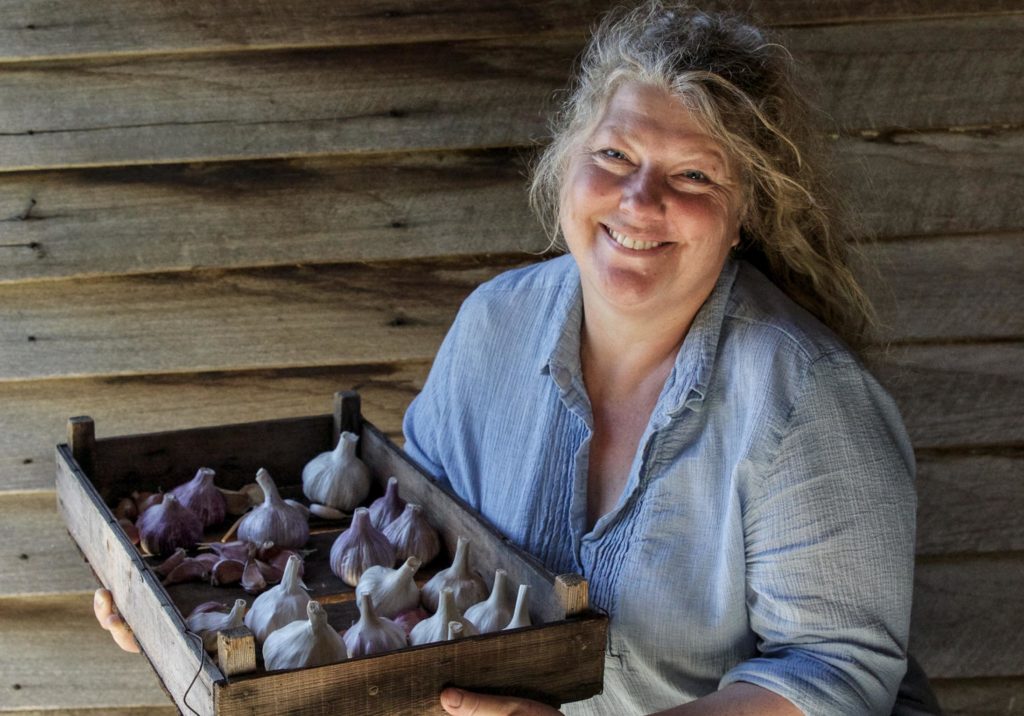
A perfect match
“These groups give us a genetic origin of where they evolved and the cultures that shaped them,” Ware says. “I’ve been doing nearly five years’ worth of culinary testing with cultivars from different origins, and I’ve found these provincially shaped garlics work absolutely perfectly with the ingredient sets of each culture and the way they cook.”
For example, in the southern regions of Italy, the typical ingredient set for a pasta sauce has a tomato and olive oil base, and usually includes some sort of strong hard cheese.
“These are sweet ingredients,” Ware says. “And so Italian garlics are what we call sharp and piquant, because their flavour profile is incredibly strong. But that sharp, piquant flavour counterbalances the sweetness of the ingredients in the dish.
“If you think about French cuisine, it’s typically butters and creams – very fatty, very sweet. So their garlic is sharp but creamy. It harmonises but it counterbalances. In northern Italy, where they use more butters and creams than southern Italy, garlics from those regions are still sharp, but they’re nutty and creamy, almost similar to the French.”
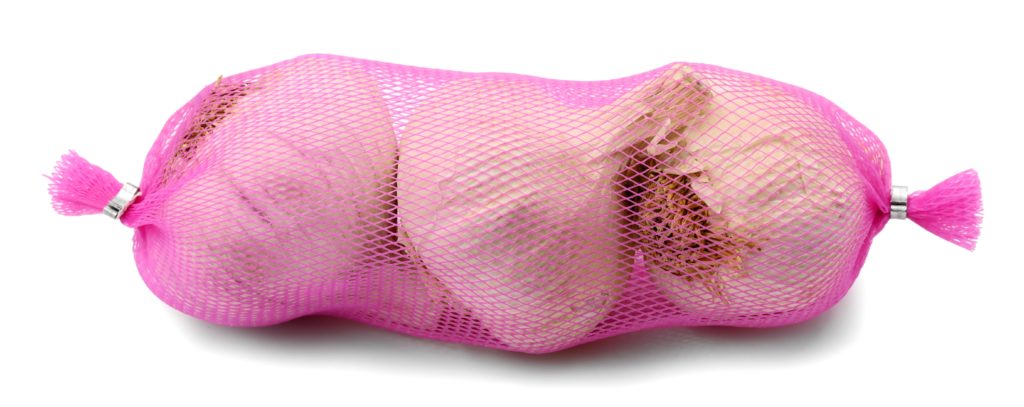
Quantity over quality
Here in Australia, large-scale supermarkets sell commercial cultivars that have nothing to do with culturally shaped provincial varieties. These are cultivars that have been developed to produce high yields and to be resilient to weather and mechanical management.
“It’s all about productivity,” Ware says. “Garlic is one of the lowest-yielding crops of any annual crop. So commercial producers are very motivated to find high-yielding strains. This industrial selection is always going to be about yield; it’s never going to be about flavour.”
Garlic only began to be commercially produced in Australia in the 1980s. This was when we began to embrace our multicultural society and the incredible cuisines that it offers. But in the mid-1990s, the Australian government deregulated the industry.
“This meant that they didn’t protect the local industry, and it allowed Chinese garlic to come in unlevied,” Ware says. “That’s when we began to see the cheap three-bulb-in-the-net packet appear. It so undercut the Australian market and people were so willing to pay this cheap price that we lost 300 commercial growers in about two years.”

The cold truth
The garlic we import from China has often been sitting in cold storage for up to two years. To stop the bulbs from sprouting on the shelf, they’re sprayed with a growth retardant. Some are even bleached to make them pure white. Imported garlic is also fumigated with methyl bromide. Once it passes the two-year mark and can’t be dumped in supermarkets, it’s dehydrated to make powders or granules. The cheap “crushed garlic” you see in supermarkets is often made with rehydrated old bulbs.
“This is creating the blandest experience of garlic that anybody can ever have,” Ware says.
We had no commercial garlic production at all in Australia from 1995 to about 2009. But even when commercial production began here again due to increased consumer demand, rather than spread production across several growers, Coles and Woolworths outsourced year-round supply to only one commercial company, which provided both local and imported garlic. Coles only introduced a second supplier a few years ago.
But things are slowly changing. As food-loving consumers begin to care more about the provenance of their food and gain a greater understanding of the importance of quality over quantity, this has encouraged more boutique or micro-growers to begin producing different cultivars that can offer you a truly exquisite culinary experience.

Holy terroir
Geoff Dugan of DR Garlic grows chemical-free garlic on his property at Koonya, in Tasmania’s far southeast. His varieties include everything from Tasmanian Purple (Turban group) and Spanish Roja (Creole group) to Crazy Ugly Betty (Glazed Purple Stripe group).
“There are enormous differences in the different varieties,” Dugan says. “This is starting to be appreciated by chefs and people in general. There are some that are very hot, spicy and punchy when they’re fresh, but become milder when they’re cooked. There are others that maintain a spiciness even during the cooking. Others have a more nutty and mild flavour. Some are best to use fresh. Others are better for cooking. Some are versatile.”
While each cultivar has been shaped by its provenance, garlic is also influenced by the environment in which it’s been grown. It’s quite similar to wine grapes.
“Garlic adjusts over seasons to its environment, to the soil and to the climate,” Dugan says. “Like in wine, you get what’s called terroir. Garlic is the same. So the same variety grown here in Tasmania could be substantially different to one grown in NSW. Despite being the same variety, they’ll have different characteristics.”
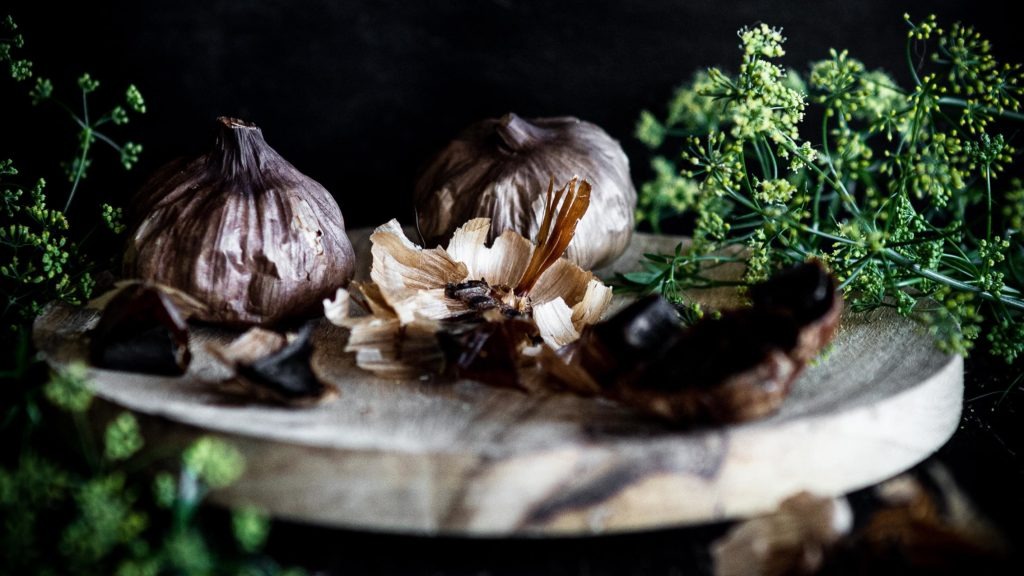
Black magic
DR Garlic also produces a range of garlic-inspired gourmet delicacies. These include garlic fermented in honey, pickled garlic, garlic salt and dukkha, garlic roasted nuts and something that’s become one of the hottest food trends in Australia – black garlic. This is made in a special machine that slowly heats the bulbs over the course of several weeks.
“There’s a process called the Maillard reaction, which gives the browning on bread and steaks,” Dugan says. “It’s that sweet browning that occurs below about 120 degrees. Above that, you get caramelisation. We use a temperature range between 60 to 82 degrees.”
Raw garlic contains a chemical compound known as allicin. During the cooking process, this breaks down. The bulb begins to develop a smooth, soft and sticky, sweet yet savoury flavour. It’s quite out of this world, and works brilliantly on a cheese platter. Dugan has even created a black garlic stout, which is now going into production.
Ware also produces black garlic, and her love of methodical, detail-oriented research has led her to discover that some cultivars work better for this delicacy than others.
“When I started experimenting, I thought that surely those same cultivars that roast well should make good black garlic, because of the sweetness in them,” she says. “But I found that there’s absolutely no correlation between the flavour of a garlic in a standard cooking environment and in making black garlic. Some cultivars create very bland black garlic, but there are other cultivars that create unique, exceptional black garlic.”
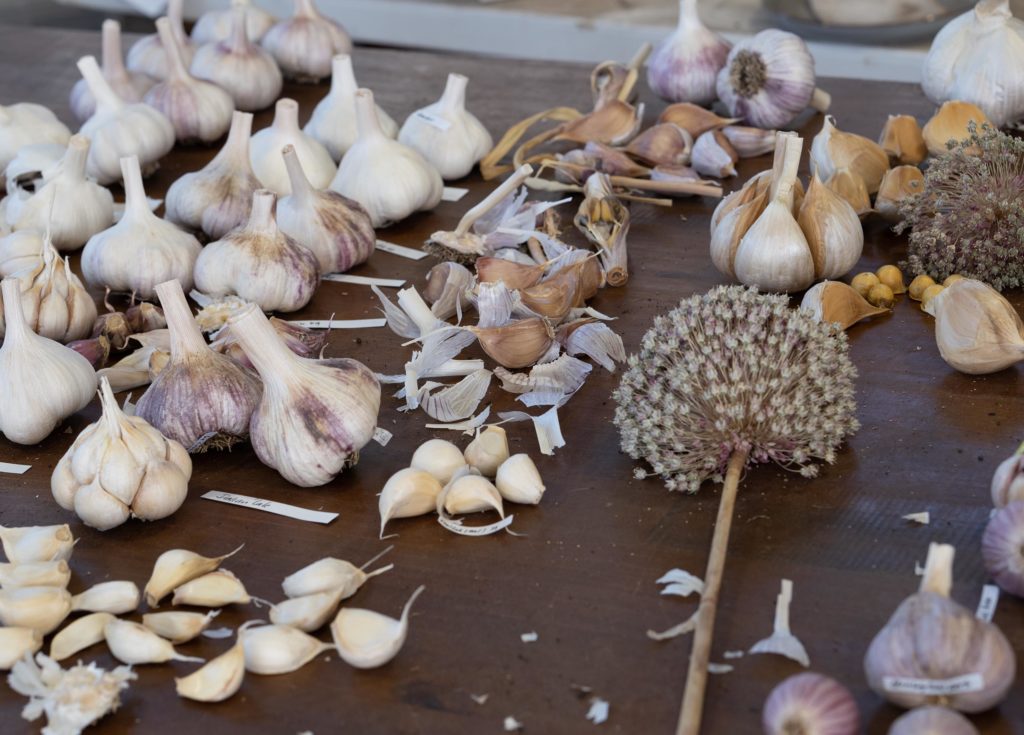
Raising the bar
Ware’s meticulous research and undeniable passion for garlic has seen her make the switch from selling culinary garlic to developing natural selection breeding programs that can provide the highest quality, most diverse range of cultivars to Australian growers who want to produce a better-tasting product than what’s on offer at Coles and Woolies.
“If we are to raise garlic in Australia above this homogenous item that’s on the supermarket shelf, we need to help boutique growers to be able to offer a truly unique, quality product,” she says. “We now have a market in our Australian culinary environment that is really seeking out these incredibly different varieties that have this superior flavour.”
The best place for you to start exploring the world beyond second-rate imported bulbs is to head to your local farmers’ market and see what you can find. If a grower can tell you what cuisine their garlic is best for and how to use it, they’re the right person to buy from.
“If we can supply genetic pure lines to these boutique growers who have the passion to bring that knowledge and that cultural specificity to the customer, they can offer them a culinary experience they’ll never get from any supermarket garlic,” Ware says.
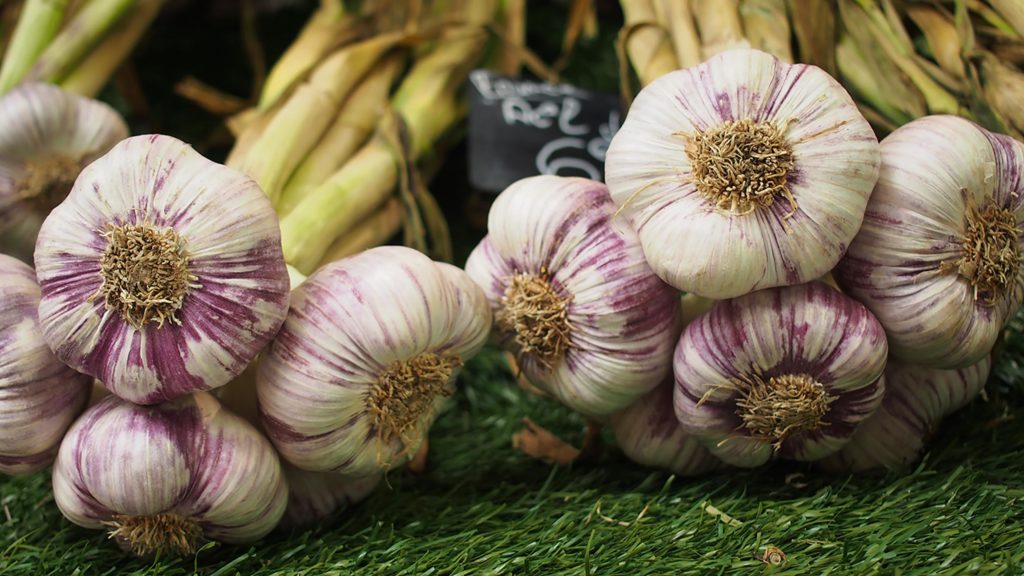
Bringing food to life
Garlic is such an important, often essential ingredient. It’s one that can have a remarkable influence on any dish, from a simple hummus to a complicated Julia Child recipe. The emergence of boutique garlic growers signals an exciting new age in Australia’s culinary story. It also provides food lovers with an option that’s far superior to cheap Chinese bulbs.
“We have to have an invested interest to counterbalance the commercial culture of supermarket garlic,” Ware says. “I think we’ll start to see this evolving in the next few years. Bringing back that knowledge that we’ve lost with the commercial homogenisation of garlic. There are hundreds and hundreds of cultivars that still have this cultural ethnicity to them, and that can make a particular regional recipe just come to life.”
For much more on groups and cultivars, and for webinars, growing guides and matching garlics to cooking styles, go to tasmaniangourmetgarlic.com.au. For more about DR Garlic, to purchase gourmet products or for recipe inspiration, go to drgarlic.com.au









